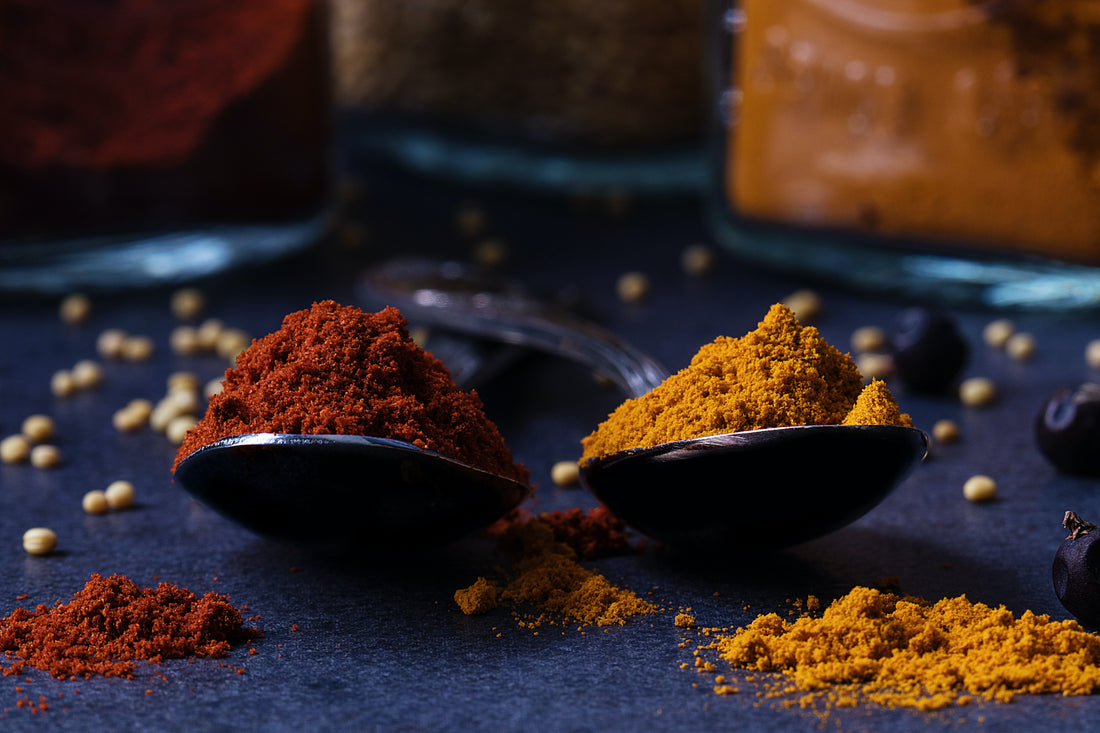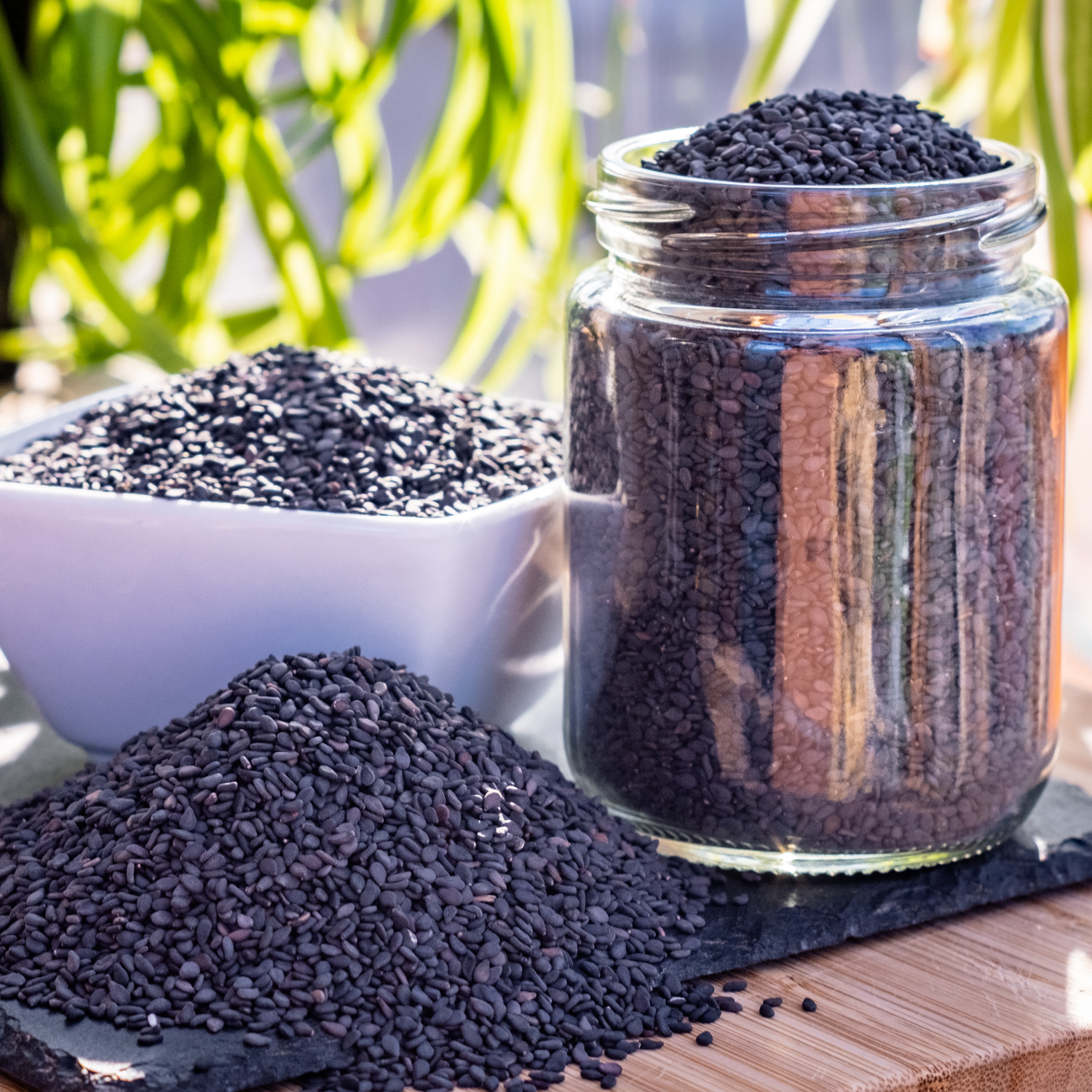
Paprika
Share
Paprika
Paprika is paprika is paprika, right? Wrong! The red spice actually comes in three varieties: sweet, smoked, and hot. Sweet paprika is generally just called “paprika,” with the other two varieties being labelled accordingly.
Paprika is made by grinding the pods of Capsicum annuum peppers, which belong to the nightshade family, and are indigenous to Southern Mexico, Central America, South America and the Antilles. However, the name “paprika” is Hungarian, and stems from the Greek peperi and the Latin piper—both of which mean pepper. Why, you may be wondering, is a spice from Mexico and Central America known by a Hungarian name?
The answer is simple. Unlike other common herbs and spices—like basil, Mediterranean oregano, thyme, and black pepper—paprika spread east, not west. Like beaver pelts, fish, and timber, Europeans found the peppers used to make paprika in the New World, and took them home with them. Rumour has it that Capsicum annuum peppers journeyed to Spain with Christopher Columbus. The peppers eventually made their way to Hungary, where paprika became an essential ingredient in Hungarian cuisine. Hungary later adopted paprika as the country’s national spice.
Before becoming known to Europeans, paprika was used medicinally by Indigenous Mexicans, Central Americans, South Americans, and Antillians. Upon arriving in Europe, Capsicum annuum was first used as an ornamental plant, before being used as a spice. Cultivation of the plant spread from Spain to southern France and England. By the 16th century, cultivation was widespread, and in the 18th century, the Ottoman Turks introduced paprika to the Balkans.
Until the 20th century, the paprika produced in Central Europe was of the hot variety. An old Hungarian film at a museum in the city of Szeged shows women describing dousing their hands in water to cool the burning caused by handling hot peppers. A machine to remove the capsaicin-containing seeds and white veins from the peppers was only invented in the late 19th century. In the early 20th century, scientists began grafting sweet paprika plants onto the hot Hungarian plants, and eventually bred out the intense heat.
Depending on the variety of paprika used, the spice’s effect on food can vary enormously. Regular paprika is mild, and is often used to add colour and pepper flavour to dishes without adding heat. Smoked paprika, as its name suggests, is made from peppers that are sun-dried and then smoked over oak fires. While smoked paprika adds rich flavour, it does not add heat. Hot paprika packs a heat similar to that of cayenne pepper. While paprika and hot paprika can be substituted to accommodate differing heat tolerances, adding or removing smoked paprika will drastically change the flavour of the dish.
Paprika is used in a wide range of foods from different countries and cultures, such as Hungarian paprikash and goulash, Spanish chorizo sausages, and sometimes even Indian tandoori chicken. The spice can also be used as an emulsifier, allowing oil and vinegar to form a smooth mixture for salad dressing, and as a garnish for eggs, hors d'oeuvres, and salads.
The peppers used to make paprika are extremely high in vitamin C—even more so than oranges—and also contain vitamins A and E. Like other peppers, Capsicum annuum contains the compound capsaicin. Capsaicin is an antioxidant and an analgesic. It can reduce the risk of cancer and heart disease, may improve fat metabolism, and is a common ingredient in topical pain treatments. Some studies support the idea that consuming paprika may help protect the skin from UV damage.
Vanillablossom carries paprika and smoked paprika, sourced from Spain and Hungary, respectively. Curious about trying hot paprika? Well, Vanillablossom doesn’t carry that—but the good news is, you don’t really need it. Just add a little cayenne pepper to your paprika.
Try Vanillablossom smoked paprika in this easy dip!
Ingredients
1 cup full-fat Greek yoghurt
Olive oil
Instructions
Put the Greek yoghurt in a shallow dish and liberally drizzle olive oil. Sprinkle the yoghurt with smoked paprika, and serve to friends and family with your choice of side.
Try Vanillablossom paprika (or smoked paprika, depending on the desired flavour) in this Hungarian goulash recipe!
Ingredients
2 medium onions
2 tsp butter or lard
1 tsp caraway seeds
2 tbsp paprika
¼ cup flour
1 ½ lb stewing beef (in 1” cubes)
2 cups beef broth
1 cup canned diced tomatoes
1 tsp salt
¼ tsp pepper
1 ½ cups carrots
3 cups potatoes
Optional: add cayenne pepper to taste, for heat
Instructions
In a large pot, melt butter and add onion. Cook until the onion is translucent. Stir in caraway seeds and paprika. In a bowl, combine stewing beef and flour. Add floured beef to the onion mixture, and cook for 2–3 minutes. Slowly add ¼ cup of beef broth to lift browned bits from the bottom of the pot. Add remaining broth, tomatoes, potatoes, carrots, salt, and pepper. Add cayenne pepper, if desired. Bring goulash to a boil. Simmer for 1 ½ –2 hours. Serve with crusty bread.
Spicy tip: To spice up your brunch, add a sprinkle of paprika and a dash of chili flakes to your avocado toast.
Sourced by Natasha Simpson

